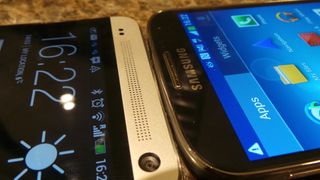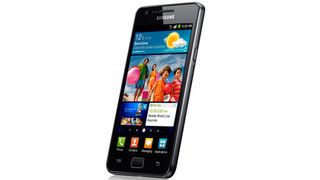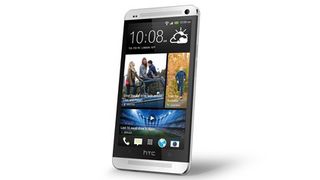Super AMOLED vs Super LCD: top smartphone screens compared
What's so super about them?

Super AMOLED and Super LCD are two of the best and most popular screen technologies currently in use on phones, and are the display tech of choice for two of the most popular Android phones around.
HTC for example, packed its One flagship with a Super LCD screen (in fact, it's one of the biggest customers of the tech by some way) while Samsung not only uses Super AMOLED, the company actually created it. But what's the difference between them? And which is better?
Super AMOLED
To understand Super AMOLED you first need to understand its origins. It started with OLED, which stands for 'organic light-emitting diode' and consists of a thin organic film with electrodes at either side. As soon as an electric current is applied to the film it emits light.

AMOLED is an 'active-matrix organic light-emitting diode'. It adds a layer of semiconducting film behind the OLED panel which allows it to more quickly activate each pixel. That increased speed makes it ideal for larger, higher definition displays with a lot of pixels. In fact it's as much as 1000 times faster than LCD.
AMOLED screens also tend to have great contrast, as the light on the screen comes from each individual pixel rather than a backlight; when it needs to create a black colour it simply dims or turns off the relevant pixels, for a true, deep black.
AMOLED screens also use a large colour gamut, so they can display a wide range of colours, but that can also cause images to look very vibrant or over-saturated.

Other advantages of AMOLED screens are that they have wide viewing angles and can even be made transparent or flexible, which makes them ideal for the curved handsets which are starting to hit the market, such as the Samsung Galaxy Round.
Get daily insight, inspiration and deals in your inbox
Get the hottest deals available in your inbox plus news, reviews, opinion, analysis and more from the TechRadar team.
An AMOLED touchscreen usually has an extra, touch sensitive layer on top of the screen, but with Super AMOLED Samsung has been able to integrate touch sensitivity into the screen itself.
The result of this is that not only is the screen thinner, lighter, more touch sensitive and less power-hungry, but without that extra layer it's also far less reflective than a typical AMOLED screen, making it easier to view in bright sunlight.
On the other hand Super AMOLED screens are quite susceptible to image burn in and sometimes use a PenTile matrix with fewer subpixels than their LCD companions, which can potentially lead to less sharp images or give the screen an unnatural colour tint.
Samsung obviously has a lot of faith in Super AMOLED, as the company uses it in its latest flagship (the Samsung Galaxy S5) as well as most other phones in the Galaxy S range, but it's also developed variations on the technology.

For example there's Super AMOLED Plus, which was used in the Samsung Galaxy S2 and has a standard RGB matrix rather than a PenTile matrix, meaning it has 50% more subpixels and therefore delivers clearer images, but it also degrades faster than a Super AMOLED display, which is why Samsung stopped using it in its flagships.
Then there's HD Super AMOLED, which is just a 720 x 1280 Super AMOLED display and Full HD Super AMOLED, which, you guessed it, is Full HD 1080 x 1920.
Super LCD
Just as AMOLED was the predecessor to Super AMOLED, LCD was the predecessor to Super LCD. Unlike an AMOLED display which lights each pixel individually, an LCD (or liquid crystal display) has a backlight, so the whole screen is lit to some extent, even supposedly black areas.
It uses liquid crystals which are manipulated via electrical charges to cover or not cover pixels as needed, thereby letting more or less light through, but it can never deliver true blacks as the backlight is always on.

In standard LCD displays there's an air gap between the outer glass and the display element, but with Super LCD that gap is removed, which has similar benefits to Super AMOLED.
Glare is reduced, making it more easily viewable when outside and in bright sunlight, plus the screen is also thinner and uses less power than standard LCD.
The power consumption of a Super LCD screen is particularly low when displaying lighter colours, which makes it ideal for web browsing for example as websites tend to have white backgrounds. The opposite is true with Super AMOLED, where blacks consume less power as the pixels don't have to be lit.

Things get a bit more complicated when you consider that there's also such a thing as Super LCD2 and Super LCD3, but really each numbered version is just an improvement on the last while working in much the same way.
Super LCD3 for example is brighter than Super LCD2, as well as having better viewing angles and a faster refresh rate to avoid blurring when watching videos.
James is a freelance phones, tablets and wearables writer and sub-editor at TechRadar. He has a love for everything ‘smart’, from watches to lights, and can often be found arguing with AI assistants or drowning in the latest apps. James also contributes to 3G.co.uk, 4G.co.uk and 5G.co.uk and has written for T3, Digital Camera World, Clarity Media and others, with work on the web, in print and on TV.

